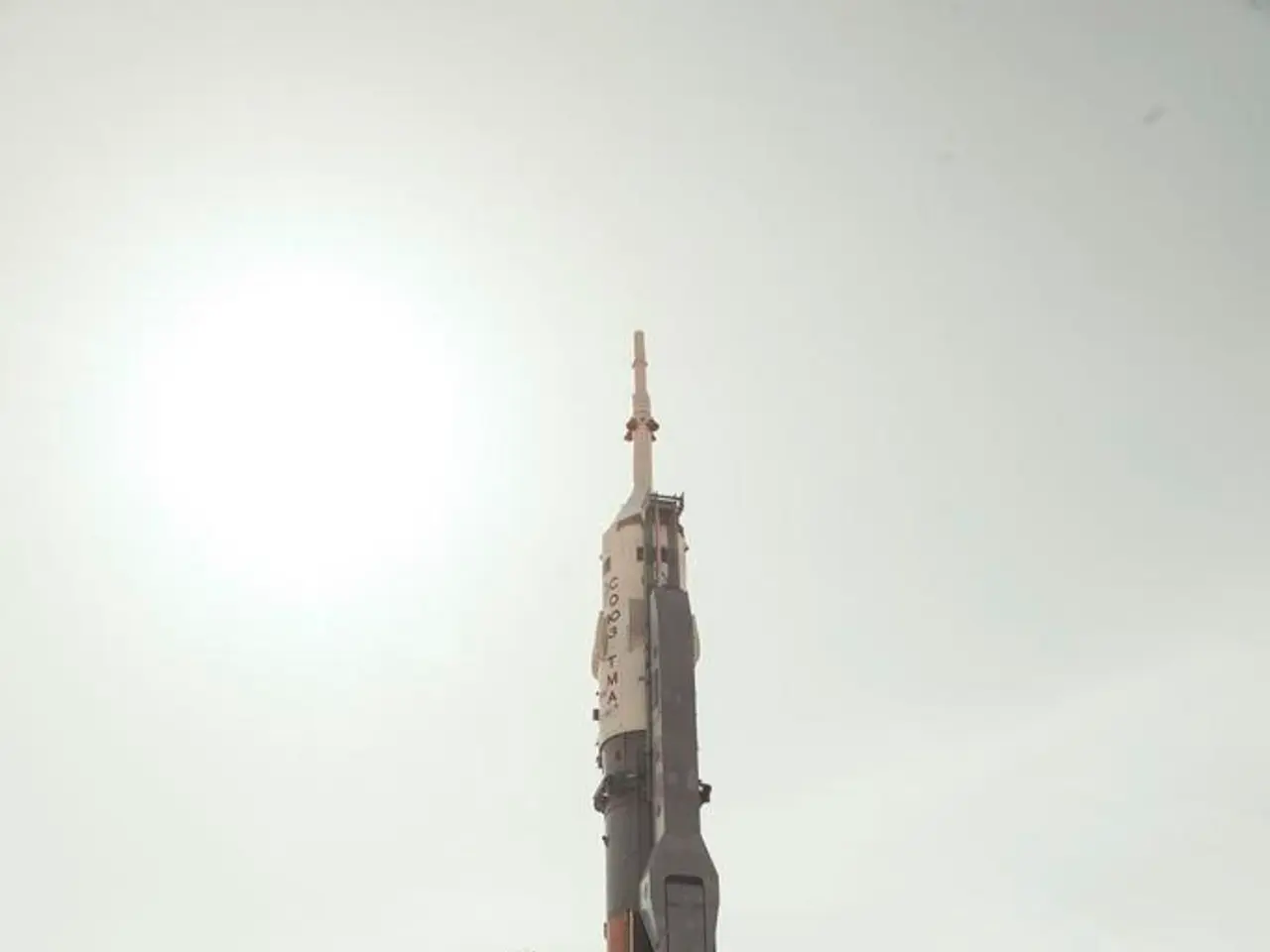Rocketry and Propulsion Terminology: In-depth Exploration - Understanding Range Safety
In the thrilling world of rocketry, ensuring safety is paramount. The importance of range safety cannot be overstated, as it helps minimize risks, protect both people and property, and guarantee the success of launches.
Improving range safety in rocketry involves a combination of continuous training, technological advancements, and collaboration among stakeholders. Here are some key practices that contribute to a safer launch environment:
## Safety Precautions
1. **Compliance with Standards**: All rockets should be built and flown in accordance with established safety standards and best practices documents, such as those provided by organizations like UKROC.
2. **Launch System Safety**: Approved launch systems providing adequate guidance for rockets are essential. Typically, this includes rail launchers with at least six feet of rigid guidance.
3. **Control and Recovery**: Autonomous on-board control systems for flight control, avoiding external signals post-launch, and using commercially available electronics without pyrotechnic charges are crucial.
4. **Range Setup and Personnel Protection**: Specific safety protocols for explosives handling, maintaining appropriate distances from explosive materials, and ensuring personnel protection are vital.
## Operational Safety
1. **Test Flights**: Encouraging teams to conduct test flights before main events helps ensure the reliability and safety of rockets.
2. **Communication and Coordination**: Effective communication among launch teams, range safety officers, and nearby air traffic control is essential to avoid conflicts and ensure safe launch windows.
3. **Airspace Awareness**: Maintaining awareness of airspace restrictions and Temporary Flight Restrictions (TFRs) is crucial to avoid unauthorized launches that could interfere with commercial or military operations.
4. **Safety Briefings and Training**: Providing thorough safety briefings and training for all personnel involved in rocket launches ensures they understand and adhere to safety protocols.
## Regulatory Compliance
1. **Certifications and Licenses**: Individuals operating high-power rockets should hold necessary certifications, such as those offered by the National Association of Rocketry (NAR).
2. **Compliance with Local Regulations**: Adhering to local and national regulations regarding rocket launches, including obtaining necessary permits and following environmental guidelines, is essential.
By implementing these best practices, rocketry enthusiasts and professionals can significantly enhance safety at launch ranges. Ignoring range safety protocols can result in legal consequences, fines, and sanctions from regulatory authorities. Safety experts inspect the launch site and rocket before a launch to ensure compliance with safety regulations.
Rocketry activities can cause significant damage if not handled properly, making range safety crucial. Range safety measures help mitigate the risks associated with rocket launches and protect both people and property in the vicinity of the launch site. A failure to follow safety guidelines can result in the loss of the rocket, damage to the launch site, and potential harm to nearby communities.
Communication protocols are essential for coordinating activities and disseminating information to all stakeholders involved in the launch. The key components of range safety in rocketry include risk assessment, safety planning, communication protocols, emergency response procedures, and monitoring systems.
Ignoring range safety protocols in rocketry can lead to accidents, injuries, property damage, and environmental harm. Risk assessment involves identifying potential hazards and evaluating the likelihood and consequences of accidents. Safety planning entails developing strategies to mitigate risks and ensure the safe conduct of rocket launches.
In the worst-case scenario, a rocket malfunction could lead to a catastrophic explosion or crash, causing significant harm to people and the environment. Monitoring systems track the trajectory of the rocket during the launch and provide real-time data to safety personnel.
Range safety refers to the protocols and procedures put in place to ensure the safe operation of rocket launches. Range safety involves pre-launch preparations, on-site monitoring, and post-launch evaluations. It ensures compliance with regulations and guidelines set by relevant authorities, such as the Federal Aviation Administration (FAA) and the National Aeronautics and Space Administration (NASA).
Training programs for range safety personnel should be regularly updated to incorporate the latest best practices and lessons learned from previous launches. Continuous improvement, collaboration, and adherence to these best practices are key to enhancing range safety in rocketry.
In the spirit of enhancing range safety in the field of rocketry, it's crucial to incorporate continuous advancements in technology. By implementing cutting-edge guidance systems and autonomous control technologies, we can further reduce risks and improve the precision of launches.
Moreover, the intersection of science, space-and-astronomy, and technology can play a significant role in this endeavor. Collaborative research in areas such as materials science, propulsion, and aerodynamics can lead to the development of safer and more efficient rockets, ultimately contributing to a safer launch environment.




